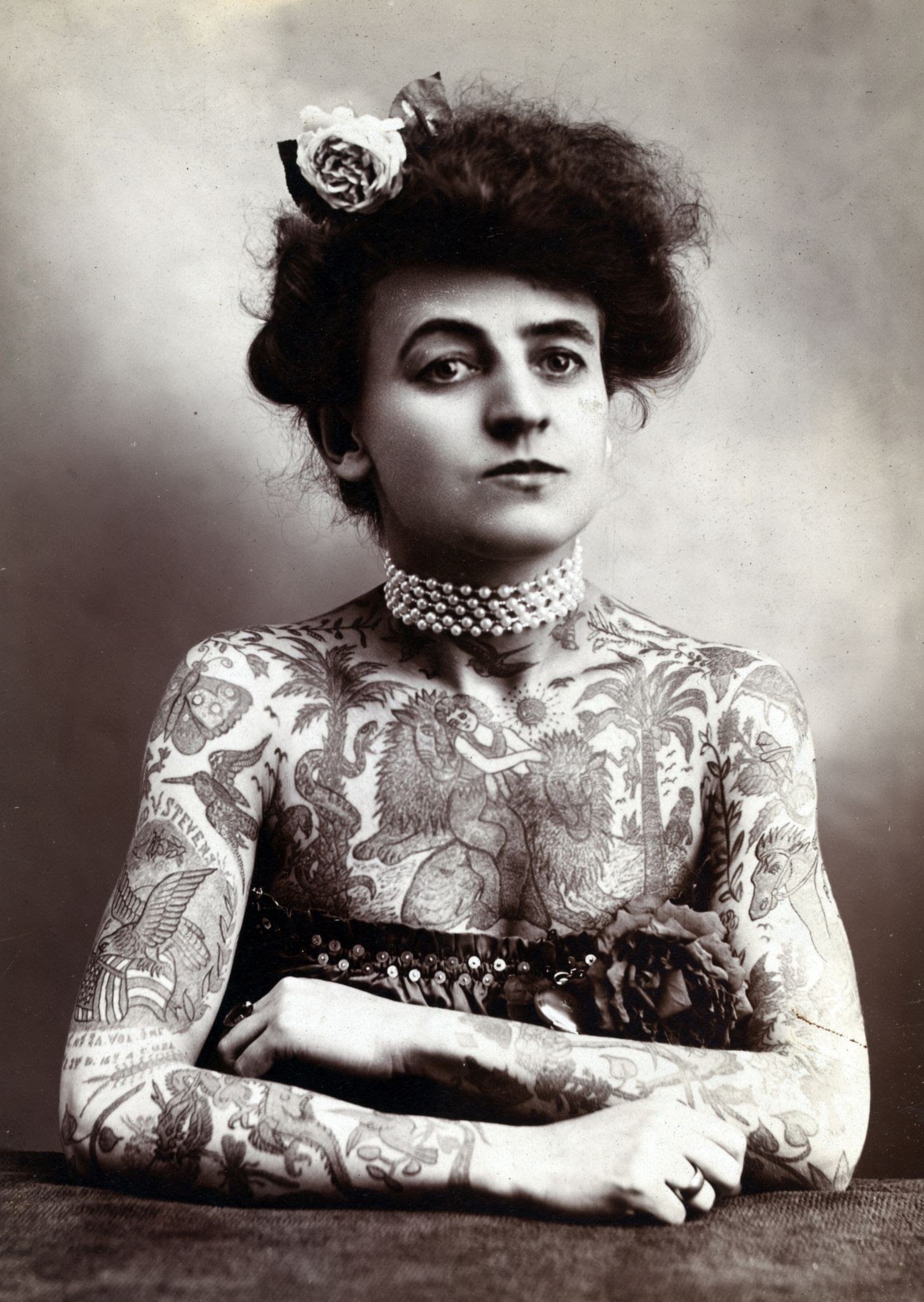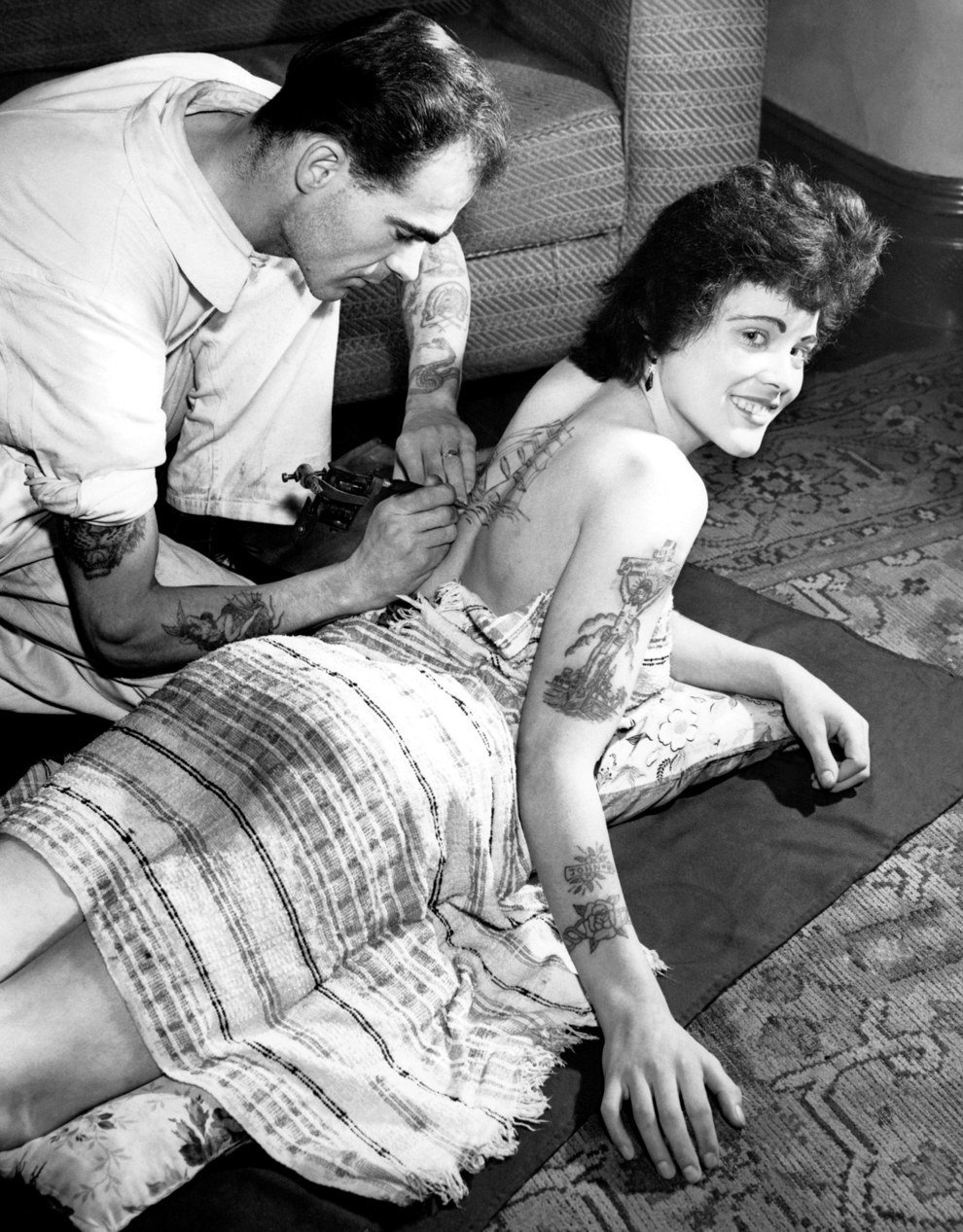First Tattoo Survival Guide: What to Expect and How to Prepare.
By Laura Molina, Alejandra Mourin and ChatGPT
So, you've decided to get your first tattoo! You even know what you want, and you've found your ideal artist on Instagram. But before you’re fully ready, let me walk you through what a tattoo is, the process, and the risks involved.
Gus Wagner tattoing his wife Maud Wagner.
What is a Tattoo?
Tattooing has been around for at least 5,000 years, and the concept hasn’t changed much. It's all about placing ink into the dermis to create a unique design. To do this, we tattoo artists use needles to penetrate the epidermis (the outer layer of skin).
Tattoo needles aren’t like other needles. They usually consist of a cluster of tiny needles, and their arrangement varies depending on their function. Because we’re puncturing the skin, the process can be painful. Yes, tattoos hurt—always, everywhere. That’s a fact.
However, the amount of pain depends on several factors: the tattoo’s size, the area being tattooed, and, most importantly, you. Pain tolerance varies from person to person due to genetics, biology, past experiences, emotions, and even your environment.
To help with the pain, you can take over-the-counter painkillers before and after your tattoo session.
Then where do tattoos hurt the most?
Some areas are more painful than others. Generally, places with little fat, lots of nerve endings, or thin skin hurt the most. Here's a quick guide:
Most Painful Areas:
Skull
Neck
Spine
Ribcage
Areola and nipple
Armpit
Inner bicep
Elbow
Wrist
Palms
Fingers
Stomach
Groin
Inner thigh
Kneecap
Shin
Ankle
Foot
Toes
Starting Small vs. Going Big
For your first tattoo, I’d recommend starting with something small. This lets you get used to the experience and see how your body reacts to the pain.
Yes, you can also start with a big tattoo, just be prepared, it’ll take longer, and the pain will increase as the session goes on due to the body's natural pain response accumulating over time. Your skin becomes more sensitive due to irritation, and your body can get fatigued from staying in the same position for hours. So, if you want to start big, get yourself mentally ready.
Less Painful Areas:
Chest
Back
Upper arm
Shoulder
Forearm
Outer thigh
Calf
Maud Wagner first known woman to become a tattoo artist.
Karlavang electrically tattooed men by Samuel O’Reilly.
Before the appointment
Getting your tattoo starts long before the needle touches your skin. Here are some tips to prepare your body and skin for the big day:
Hydrate: Drink plenty of water in the days leading up to your appointment. Hydrated skin is more elastic and easier to tattoo, this can make the process a bit less painful.
Moisturize: Apply a gentle, unscented moisturizer to the area daily. This prevents dryness and flakiness, which can affect ink quality and healing.
Exfoliate: Use a mild exfoliant once or twice a week to remove dead skin cells. This creates a smooth surface for the tattoo and helps prevent clogged pores.
Avoid Sun Exposure: Keep the area out of direct sunlight. Sunburned or overly tanned skin is more painful to tattoo and may not heal as well. If you’ll be outdoors, use sunscreen to protect the area.
Eat Well: Stick to a healthy, balanced diet rich in vitamins and minerals. Good nutrition helps keep your skin in top condition, which is key for a great tattoo.
Self-taught tattooist Ron Ackers at Work in Bristol.
Edith Burchett wife of "Professor" Burchett, the "King of Tattooists"
Tattoo Day Tips
The big day is finally here! Here’s how to prepare and make the session as smooth as possible:
Bring Your ID: You’ll need to fill out some forms before your tattoo, and your ID is required. Don’t forget it!
Eat Before Your Appointment: A full stomach is essential. Tattooing puts your body under stress, and being well-fed helps prevent lightheadedness or fainting. For longer sessions, bring a snack or make sure you and your artist plan for breaks.
Stay Hydrated: Bring water to sip during the session. Hydration can help manage pain and keep you comfortable.
Dress Comfortably: Wear clothes that give your artist easy access to the area being tattooed and that you don’t mind potentially getting stained with ink.
Bring a Blanket or Pillow: Tattoo studios tend to be cold, especially during long sessions. A cozy blanket or pillow can keep you comfortable—but make sure anything you bring is clean and easy to manage.
Take the Day Off: Even for smaller tattoos, it’s a good idea to rest and recover afterward. You’ll feel more relaxed and give your body time to heal.
The Risks?
Yes, tattooing has some risks. The nature of poking and opening a wound on the skin allows for a certain level of exposure like infections or bloodborne diseases. This is what you need to know:
Infection: Tattoos create a wound, and any wound can get infected. Proper aftercare is crucial.
Bloodborne Diseases: If a studio isn’t properly sterilized, there’s a risk of exposure to diseases like hepatitis B and C.
Allergic Reactions: Some people may react to certain pigments in the ink, though this is rare.
Scarring and Keloids: Improper care or a natural predisposition can lead to scarring or keloid formation.
MRI Complications: Some tattoo inks contain metals that might cause minor issues during MRI scans.
Don’t worry!
Tattooing in action, sometime in the 1900’s
These risks can all be avoided if your tattoo artist is responsible and runs a clean, professional studio. Take the time to find a skilled tattoo artist you trust. If something feels off or makes you uncomfortable during the process, don’t hesitate to speak up. Open communication is key, express your concerns, ask questions, and ensure you’re comfortable every step of the way. After all, the best tattoos come from mutual trust and understanding between you and your artist.








